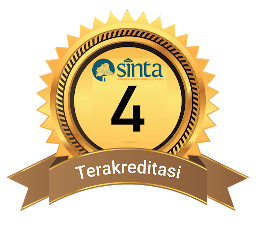Pengaruh Model Pembelajaran Berbasis Masalah dengan Tipe Group Investigation (Gi) Terhadap Hasil Belajar Kimia Siswa
DOI:
10.29303/cep.v1i1.883Published:
2018-11-06Issue:
Vol. 1 No. 1 (2018): MeiArticles
Downloads
How to Cite
Abstract
Penelitian ini bertujuan untuk mengetahui pengaruh model pembelajaran berbasis masalah (Problem Based Learning) dengan tipe Group Investigation (GI) terhadap hasil belajar materi pokok larutan elektrolit dan nonelektrolit pada siswa kelas X MIA SMAN 1 Labuapi Lombok Barat. Jenis penelitian ini merupakan quasy eksperimen dalam bentuk nonequivalent control group design post-test only. Populasi dalam penelitian ini meliputi siswa kelas X MIA SMAN 1 Labuapi. Metode yang digunakan untuk pengambilan sampel yaitu dengan metode purposive sampling. Sampel pada penelitian ini yaitu kelas X MIA 2 sebagai kelas eksperimen dan kelas X MIA 1 sebagai kelas kontrol. Pada kelas eksperimen diberi perlakuan dengan menggunakan model pembelajaran berbasis masalah (Problem Based Learning) dengan tipe Group Investigation (GI) sedangkan pada kelas kontrol diberi perlakuan dengan menggunakan model pembelajaran (Problem Based Learning). Uji hipotesis pada penelitian ini menggunakan uji-t. Hasil uji statistik uji-t thitung pada taraf signifikan 5% menunjukkan thitung (0,542) < ttabel (2,021) yang berarti Ho diterima dan Ha ditolak. Berdasarkan hasil tersebut maka dapat disimpulkan bahwa tidak terdapat pengaruh yang lebih baik dari penerapan model pembelajaran berbasis masalah (Problem Based Learning) dengan tipe Group Investigation (GI) terhadap hasil belajar materi pokok larutan elektrolit dan nonelektrolit pada siswa kelas X MIA SMAN 1 Labuapi Lombok Barat.
ÃÂ
Author Biographies
Lara Pebriana, Program Studi Pendidikan Kimia, FKIP, University of Mataram
Sukib Sukib, Program Studi Pendidikan Kimia, FKIP, University of Mataram
Eka Junaidi, Program Studi Pendidikan Kimia, FKIP, University of Mataram
License
Authors who publish with Chemistry Education Practice agree to the following terms:
- Authors retain copyright and grant the journal right of first publication with the work simultaneously licensed under a Creative Commons Attribution License 4.0 International License (CC-BY-SA License). This license allows authors to use all articles, data sets, graphics, and appendices in data mining applications, search engines, web sites, blogs, and other platforms by providing an appropriate reference. The journal allows the author(s) to hold the copyright without restrictions and will retain publishing rights without restrictions.
- Authors are able to enter into separate, additional contractual arrangements for the non-exclusive distribution of the journal's published version of the work (e.g., post it to an institutional repository or publish it in a book), with an acknowledgement of its initial publication in Chemistry Education Practice.
- Authors are permitted and encouraged to post their work online (e.g., in institutional repositories or on their website) prior to and during the submission process, as it can lead to productive exchanges, as well as earlier and greater citation of published work (See The Effect of Open Access).






